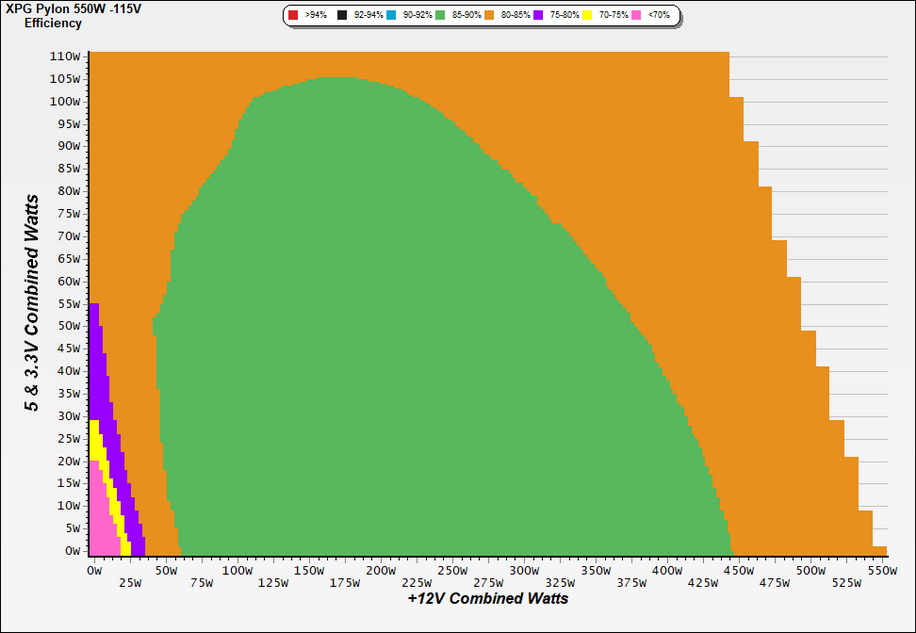Why you can trust Tom's Hardware
Protection Features
Check out our PSUs 101 article to learn more about PSU protection features.
|
Protection Features | Row 0 - Cell 1 |
|
OCP (Cold @ 24°C) |
12V: 55.2A (121.32%), 12.083V |
|
OCP (Hot @ 36.5°C) |
12V: 54.4A (119.56%), 12.086V |
|
OPP (Cold @ 25°C) |
704.74W (128.13%) |
|
OPP (Hot @ 41°C) |
669.66W (121.76%) |
|
OTP |
✓ (148°C @ 12V Heat Sink) |
|
SCP |
12V to Earth: ✓ |
|
PWR_OK |
Accurate but lower than 16ms |
|
NLO |
✓ |
|
SIP |
Surge: MOV |
OCP at 12V and OPP are correctly configured, though we would like to see lower triggering points on the minor rails, especially at 3.3V. All other protection features are present and work fine.
DC Power Sequencing
According to Intel’s most recent Power Supply Design Guide (revision 1.4), the +12V and 5V outputs must be equal to or greater than the 3.3V rail at all times. Unfortunately, Intel doesn't mention why it is so important to always keep the 3.3V rail's voltage lower than the levels of the other two outputs.
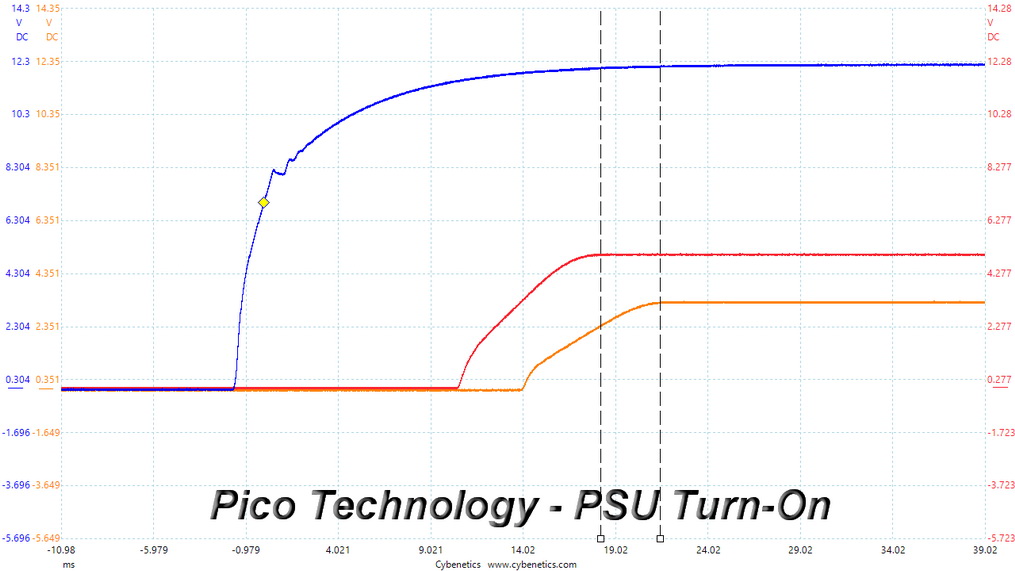
DC Power Sequencing Scope Shots
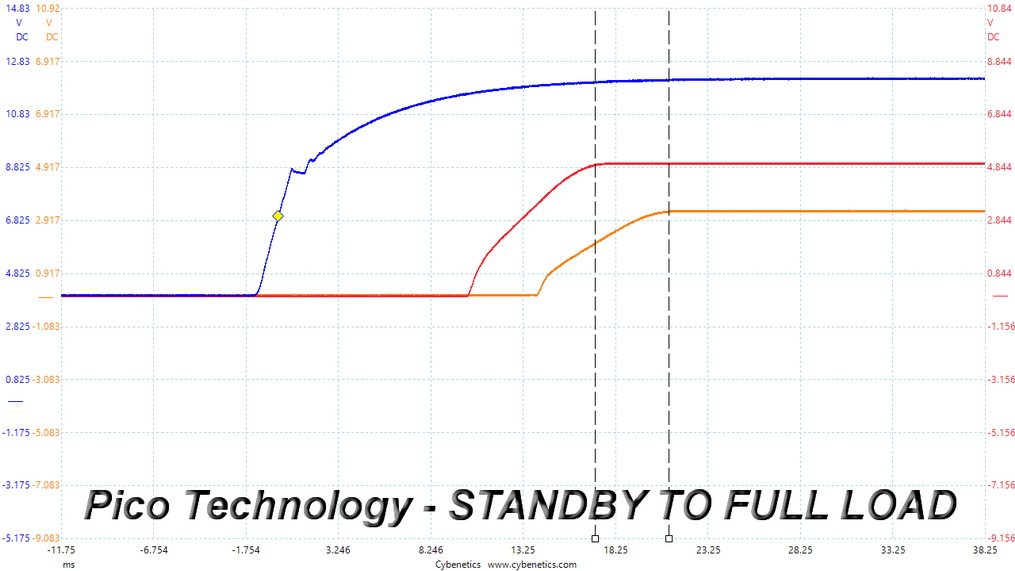
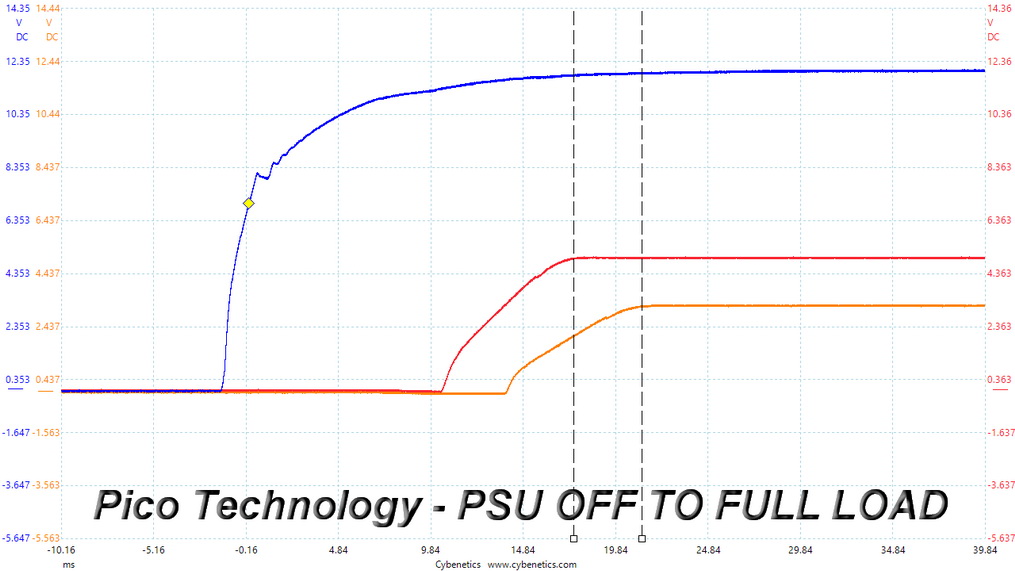
The XPG Pylon 550W's 3.3V rail is lower than the other two in all three tests, though, so there is no problem here.
Cross Load Tests
To generate the following charts, we set our loaders to auto mode through custom-made software before trying more than 25,000 possible load combinations with the +12V, 5V, and 3.3V rails. The deviations in each of the charts below are calculated by taking the nominal values of the rails (12V, 5V, and 3.3V) as point zero. The ambient temperature during testing was between 30 to 32 degrees Celsius (86 to 89.6 degrees Fahrenheit).
Load Regulation Charts
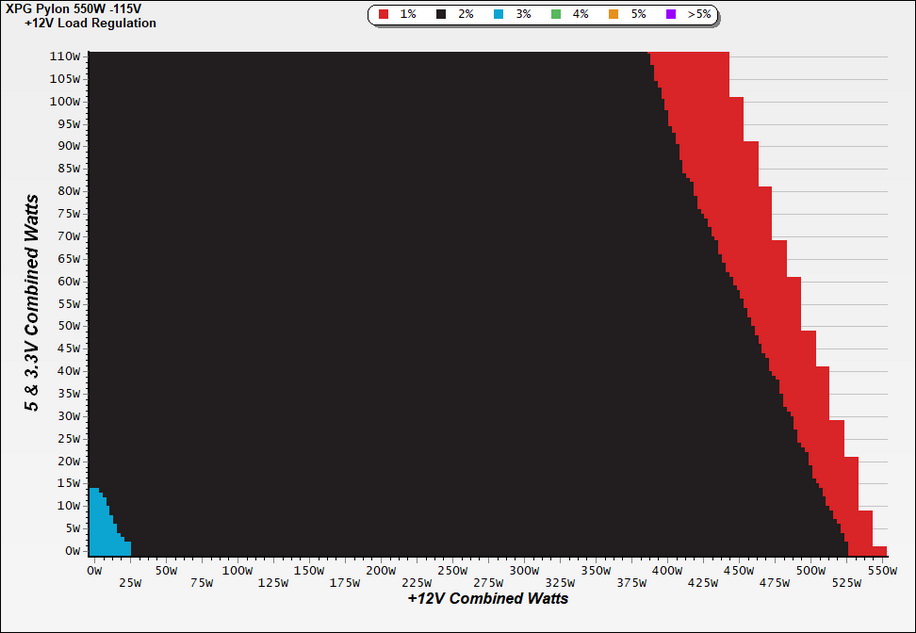
Load Regulation Graphs
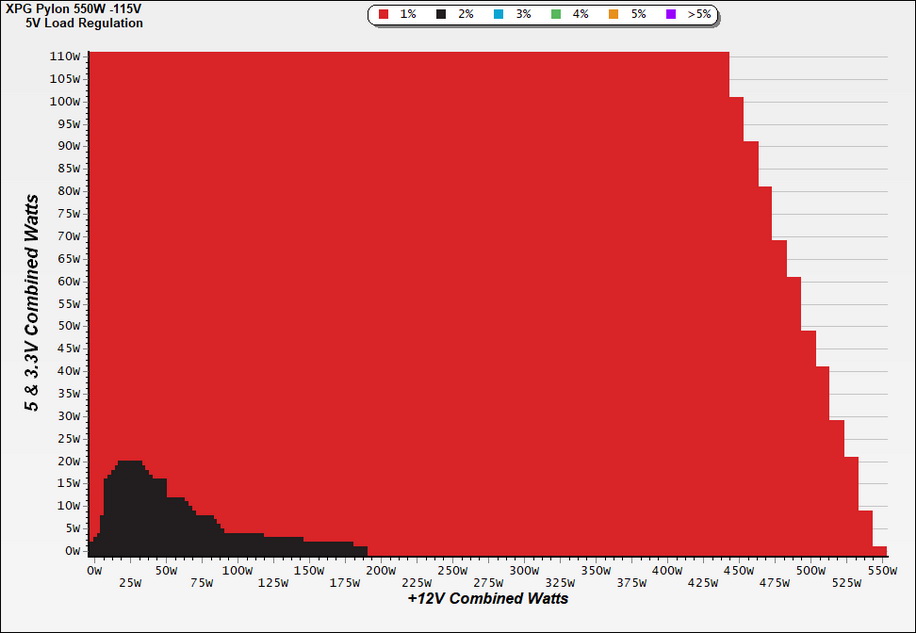
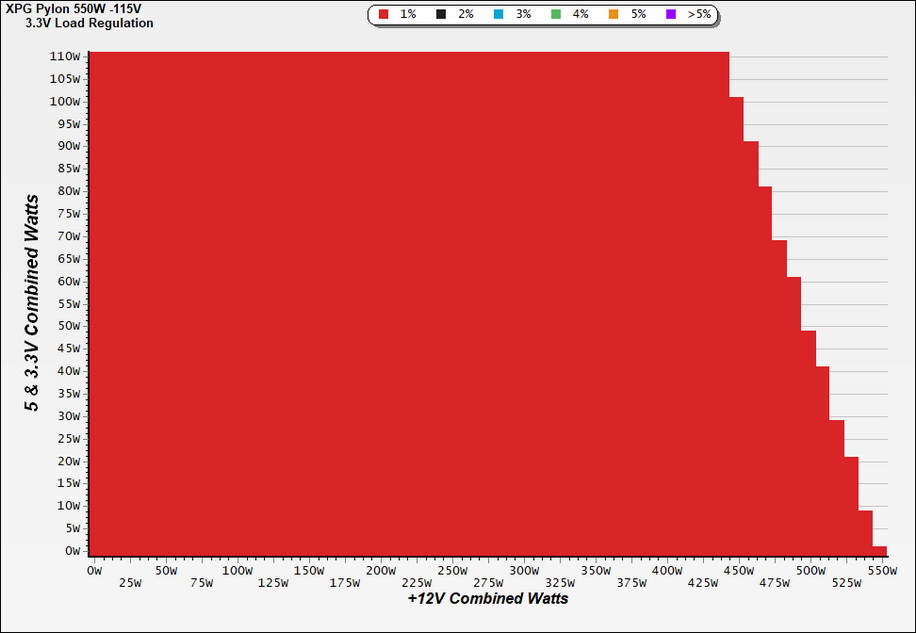
Efficiency Graph
Ripple Graphs
The lower the power supply's ripple, the more stable the system will be. Less stress will also be applied to its components.
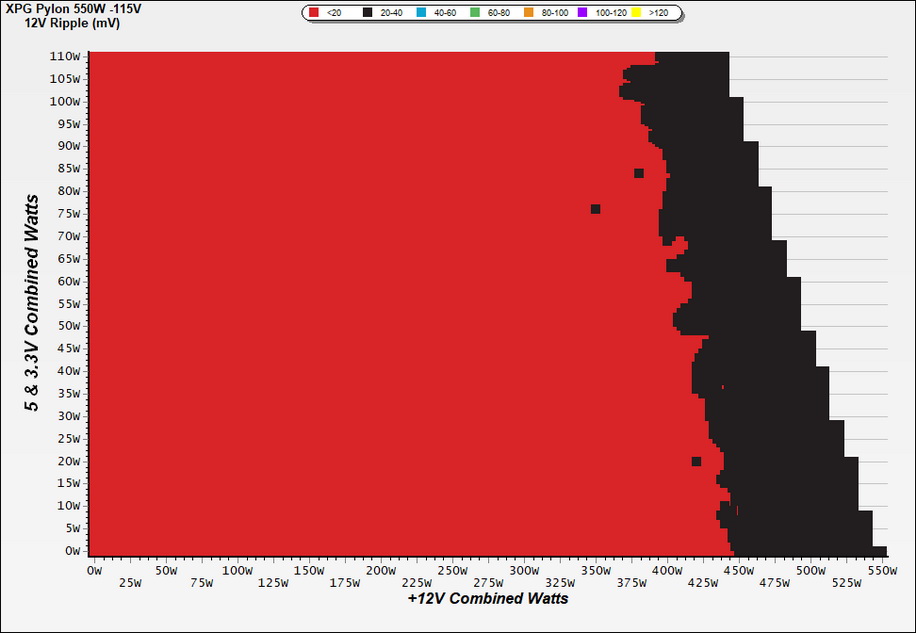
Ripple Suppression Graphs
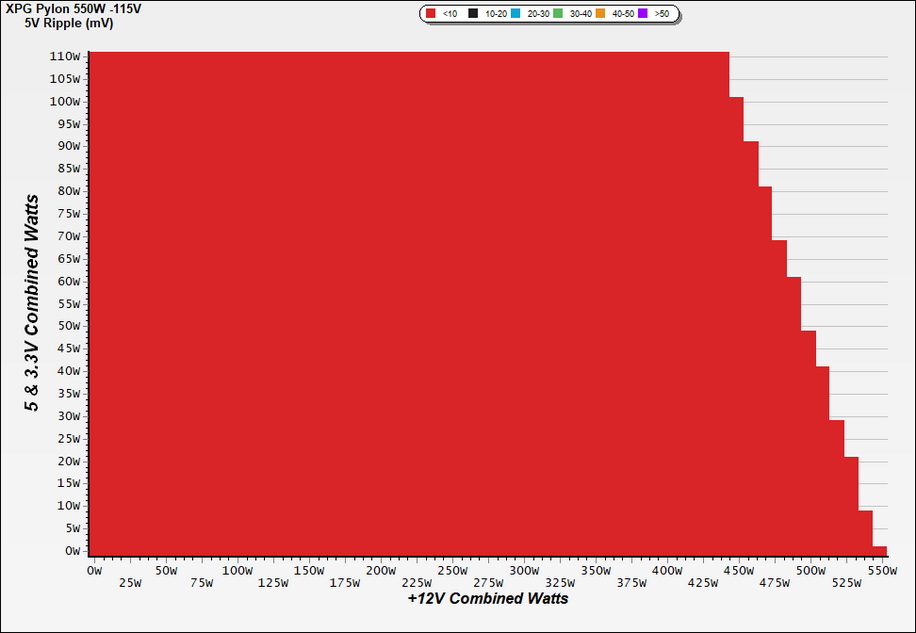
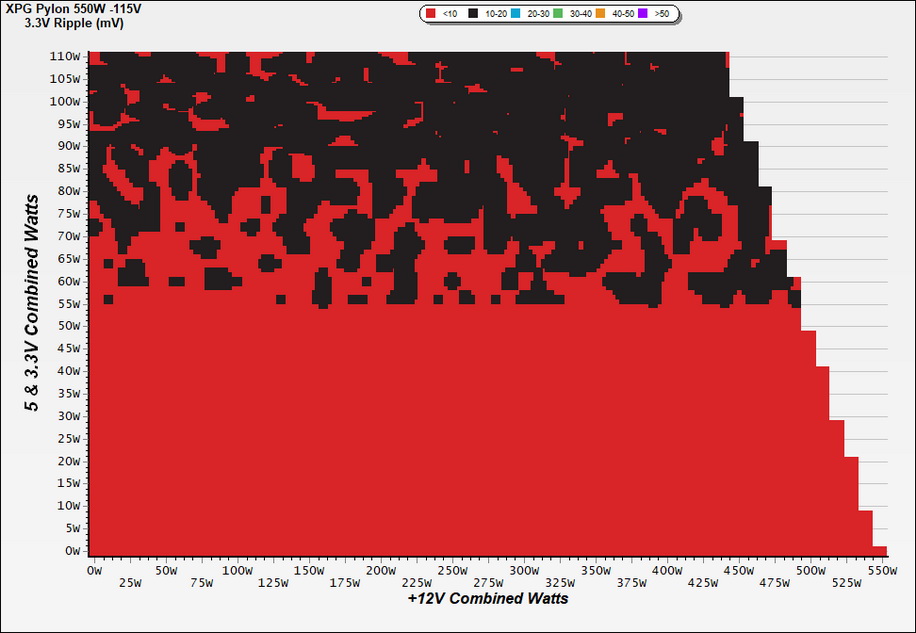
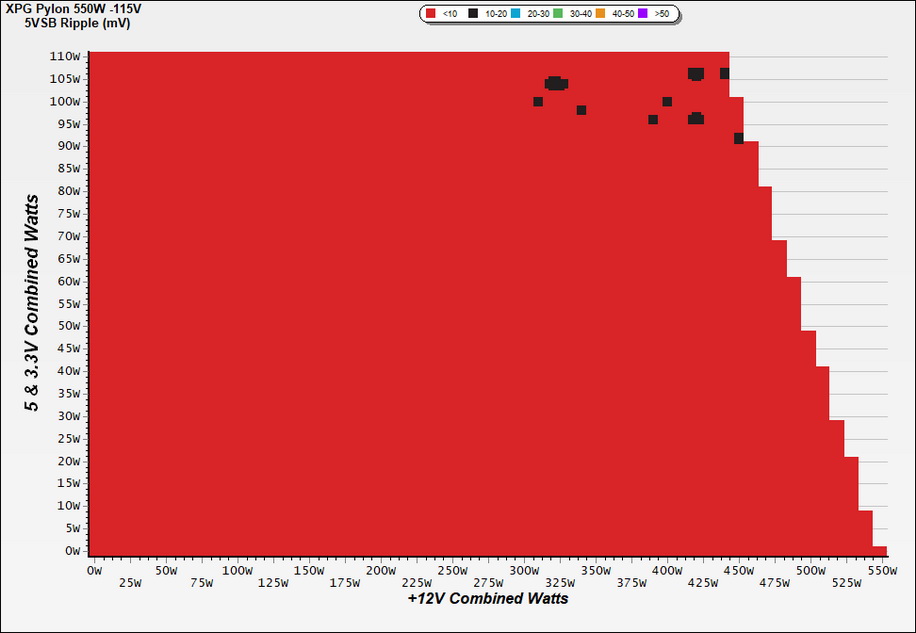
Infrared Images
We apply a half-load for 10 minutes with the PSU's top cover and cooling fan removed before taking photos with a modified FLIR E4 camera able to deliver an IR resolution of 320x240 (76,800 pixels).
Get Tom's Hardware's best news and in-depth reviews, straight to your inbox.
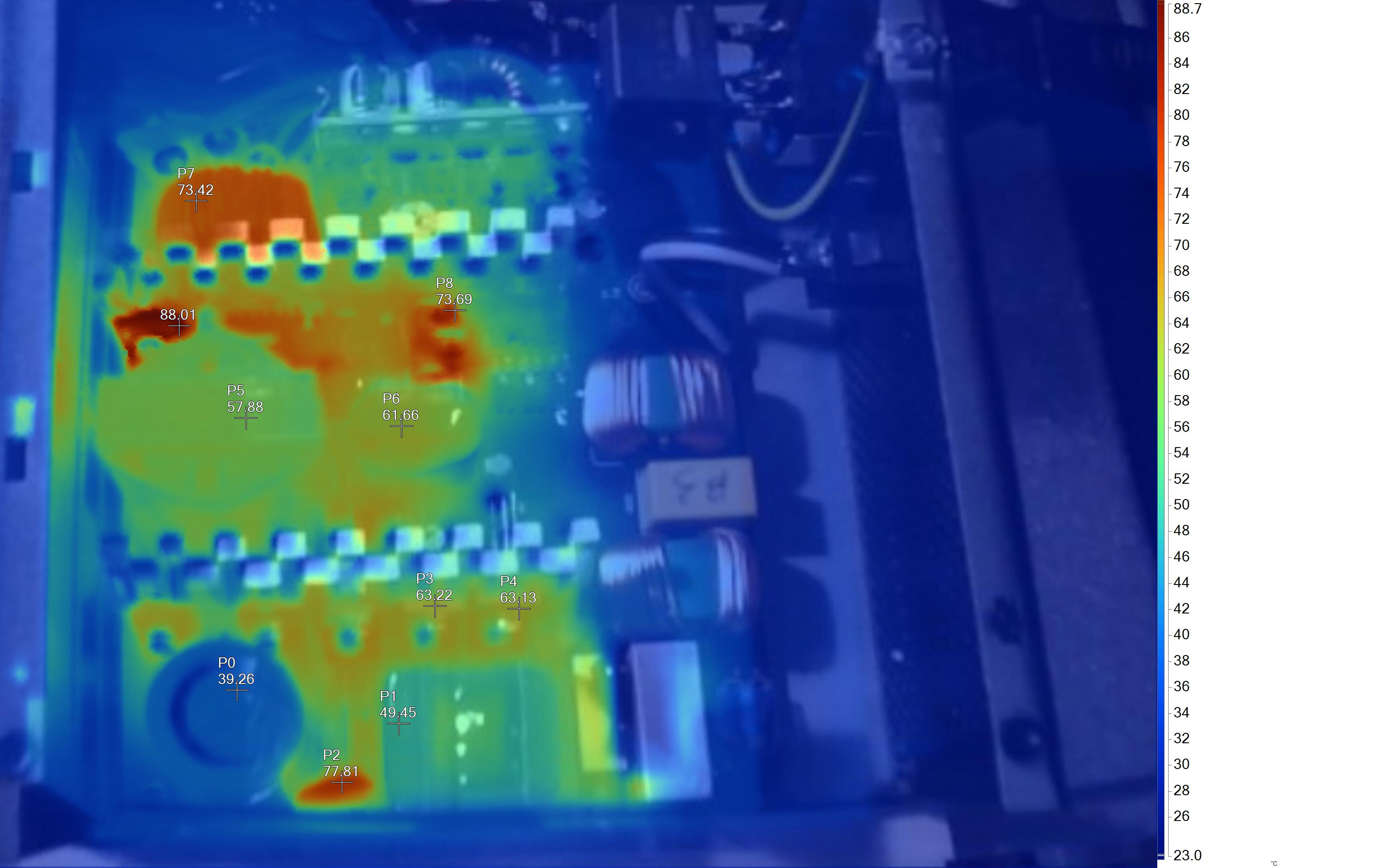
IR Images
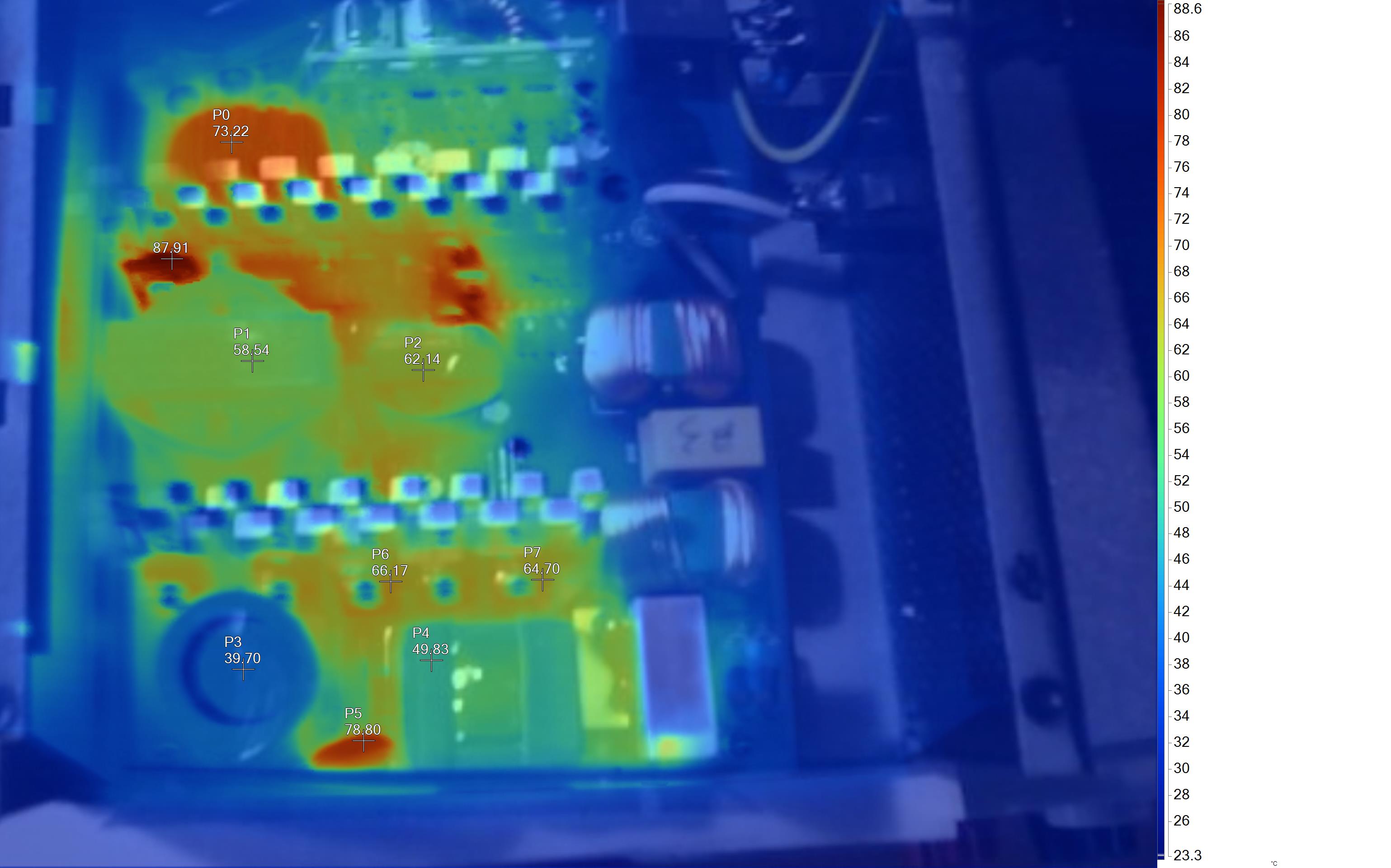
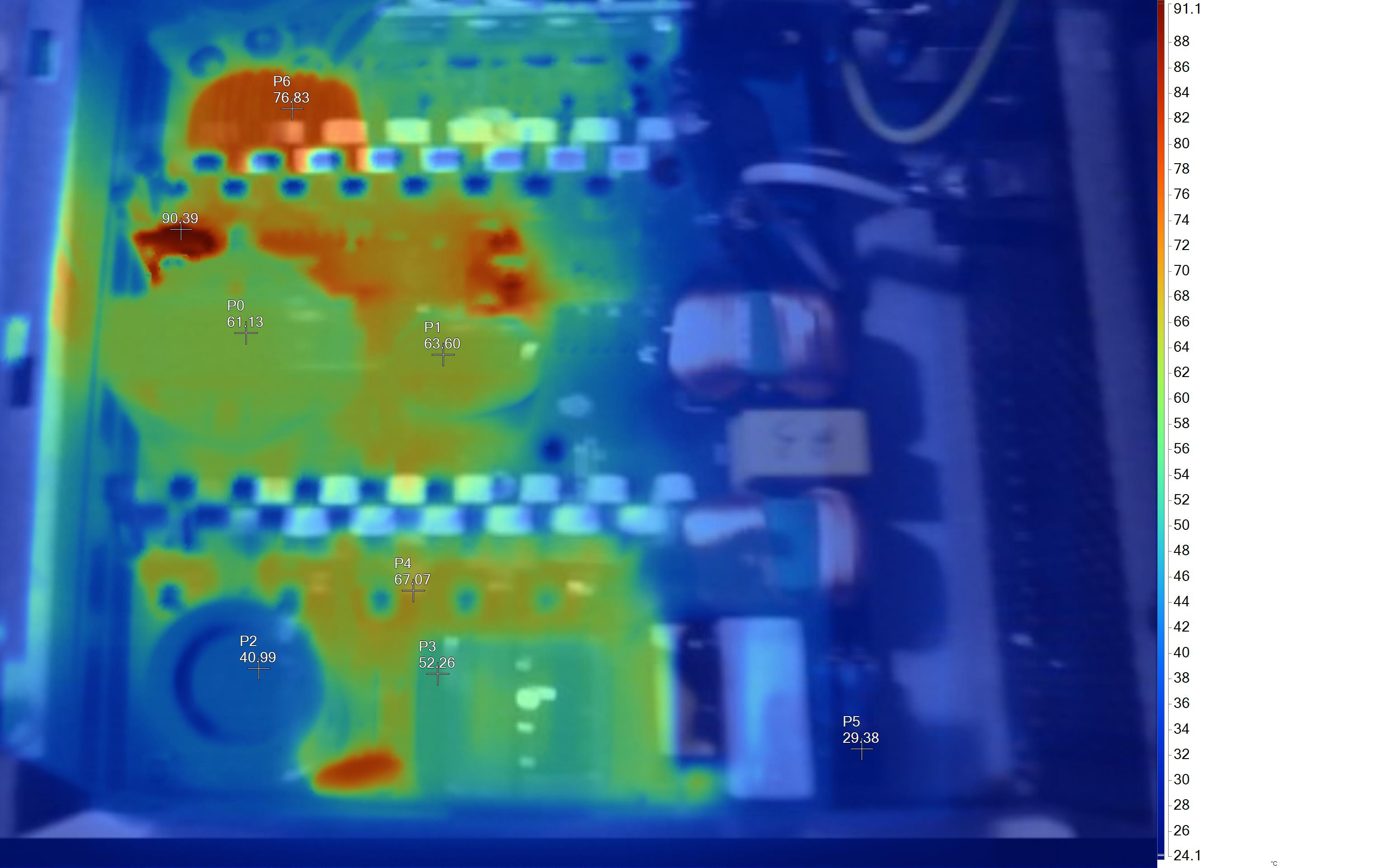
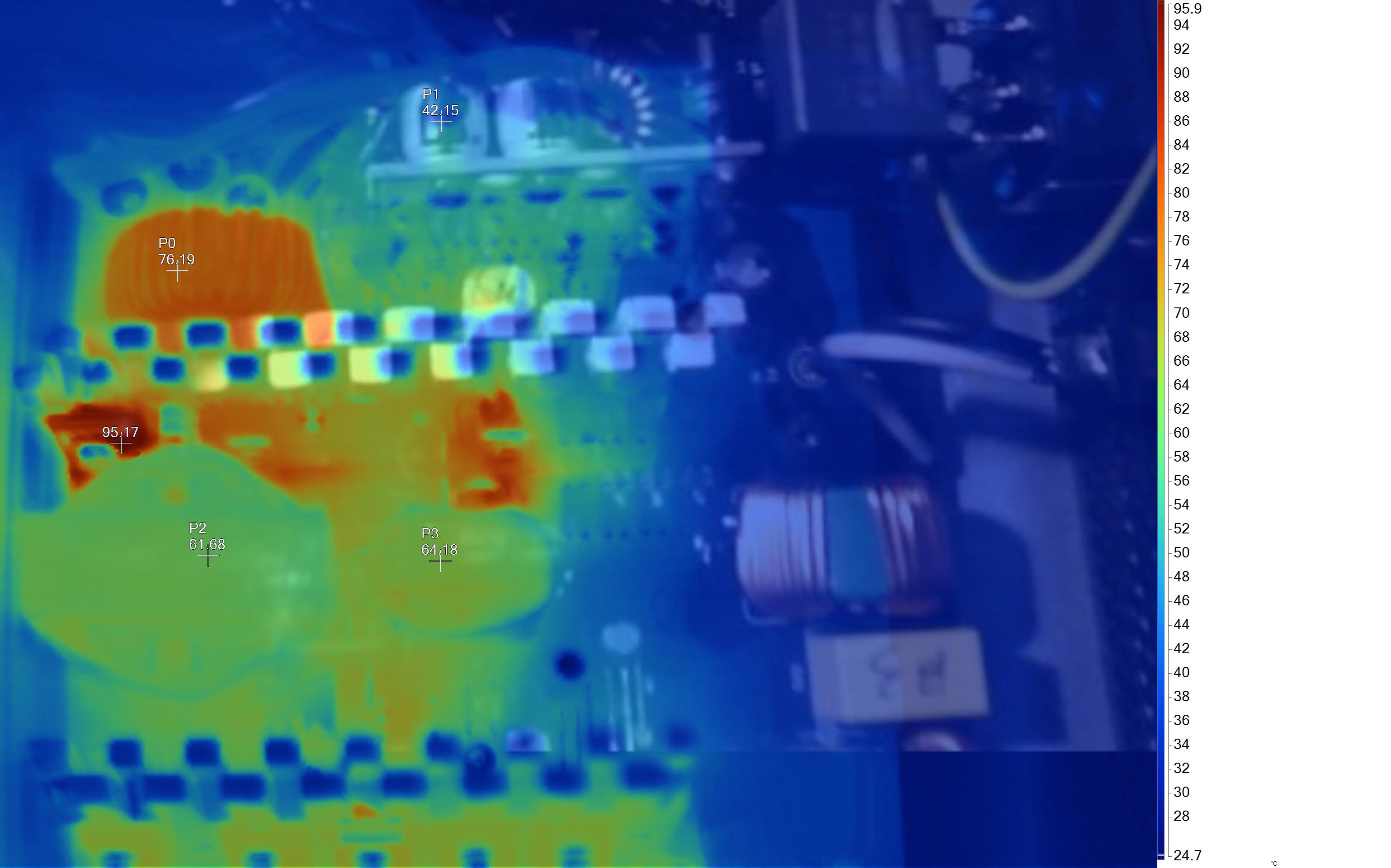
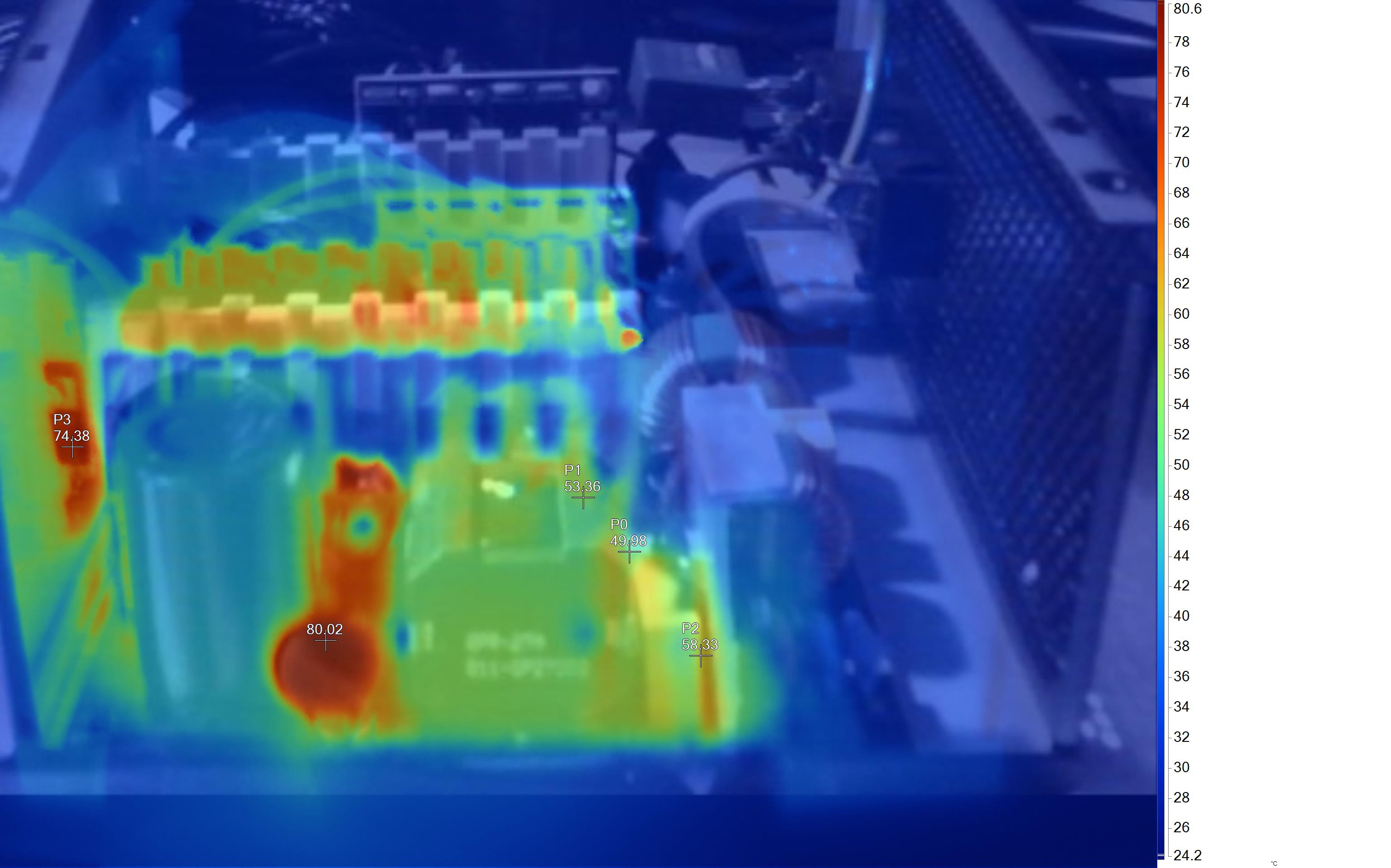

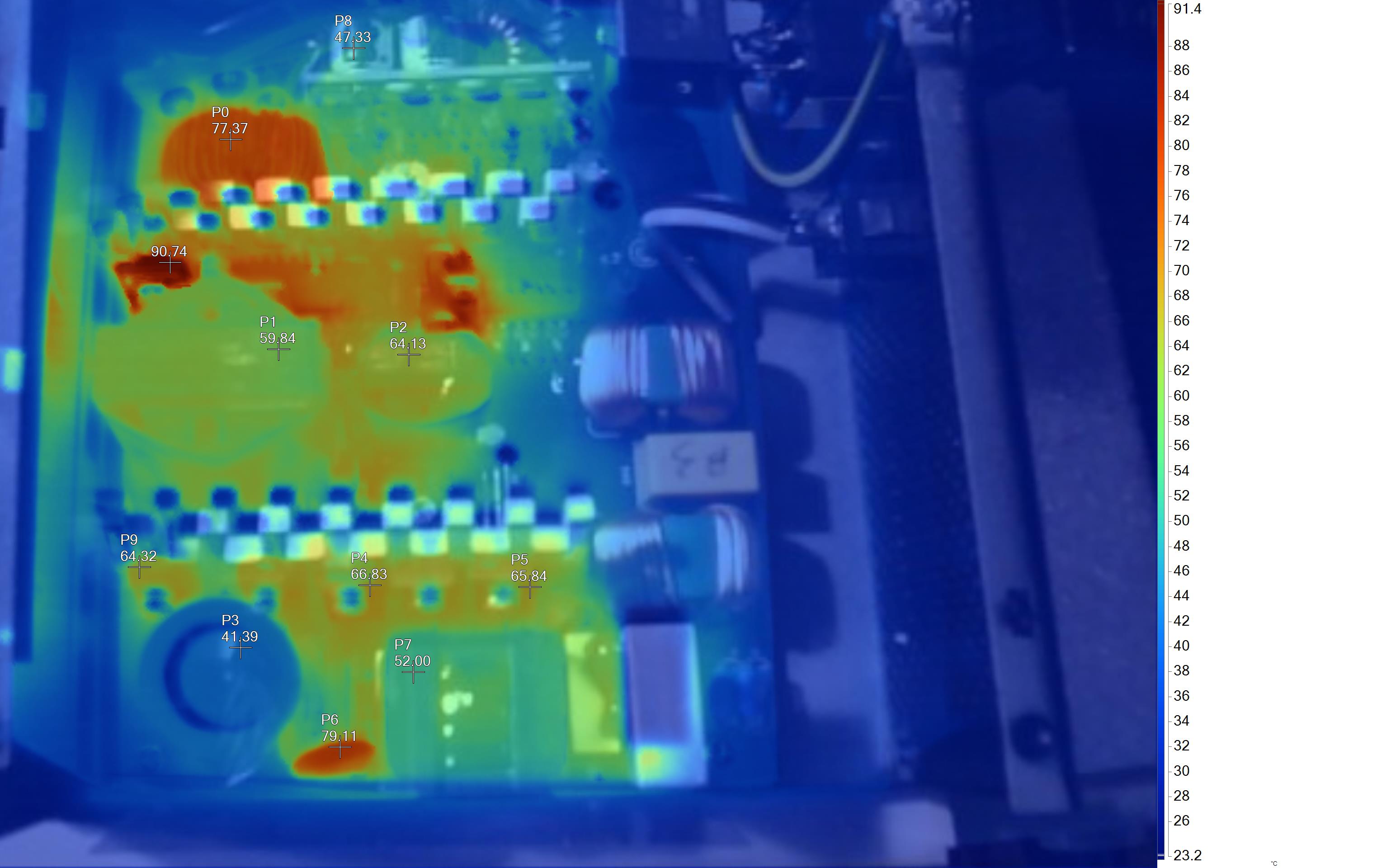
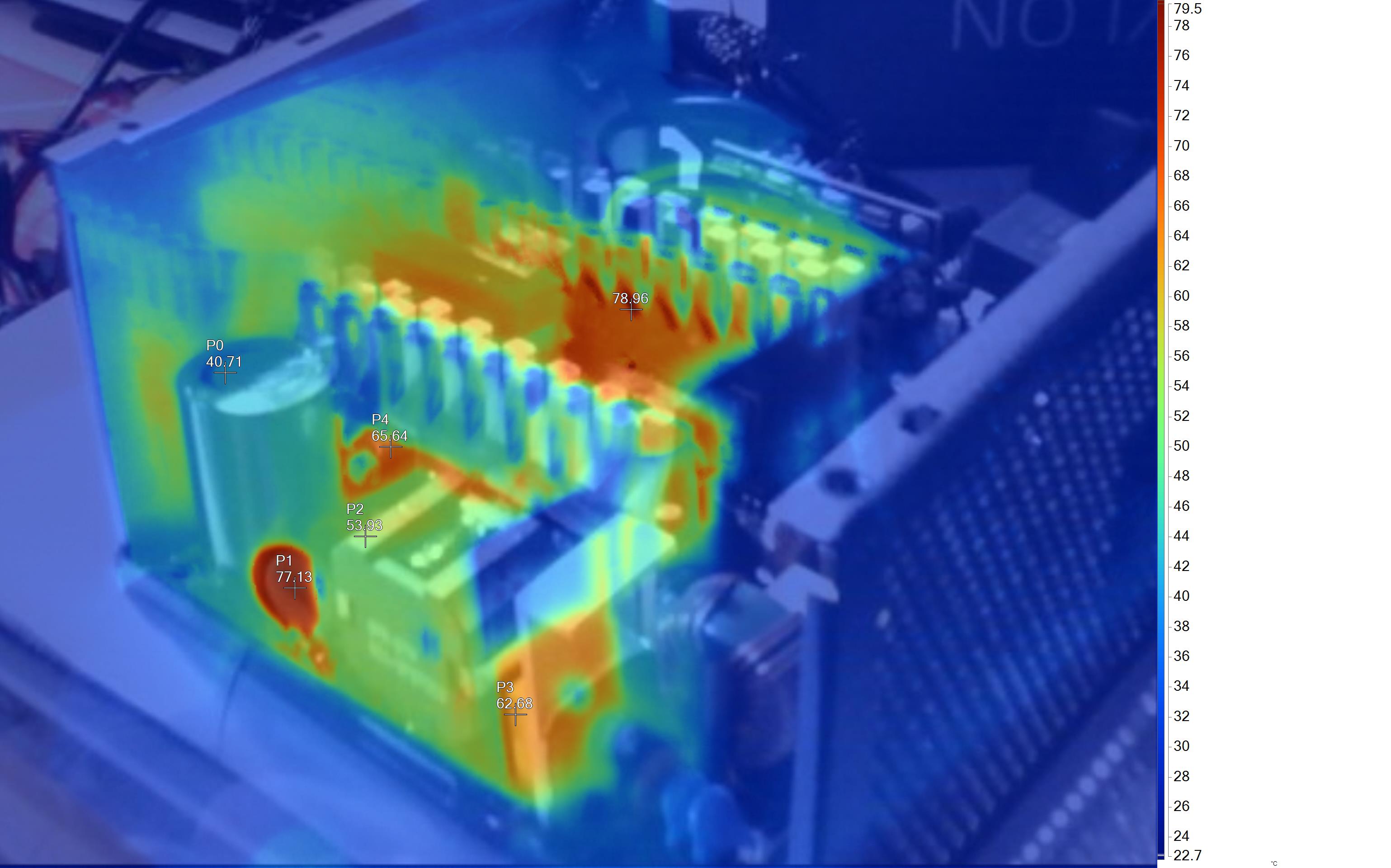
The NTC thermistor gets quite hot since there is no bypass relay. This means lower resistance thus lower energy losses on it, but it won't provide adequate protection in a hot restart with the bulk cap empty. The SBRs on the secondary side reach 100 degrees Celsius, even with mid load, because there is no active cooling. Lots of energy is lost there, and this is why active cooling is required.
MORE: Best Power Supplies
MORE: How We Test Power Supplies
MORE: All Power Supply Content
Current page: Protection Features, DC Power Sequencing, Cross-Load Tests and Infrared Images
Prev Page Load Regulation, Hold-Up Time, Inrush & Leakage Current, Efficiency and Noise Next Page Transient Response Tests, Timing Tests, Ripple Measurements and EMC Pre-Compliance Testing
Aris Mpitziopoulos is a contributing editor at Tom's Hardware, covering PSUs.
